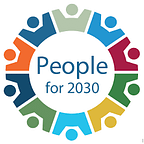Building resilient communities with the help of traditional indigenous knowledge
Meet Winifereti Nainoca, an Environmental Specialist and Deputy Team Leader for UNDP in Fiji, who shares how she’s been able to integrate traditional ecological knowledge while overseeing projects across the Pacific Islands.
I was a lecturer at the Fiji Institute of Technology for 20 years, teaching various applied science subjects such as natural resource management and marine ecology. In my last seven years there, I was actually the Head of the School of General Studies. But I was getting involved and interested in marine-protected areas because my village is beside the sea and I belong to the fishermen tribe in my district of Noco. When I came in as Environment Team Leader in UNDP in 2011, I had just finished my PhD. I was becoming more aware of my Fijian identity after my studies, and UNDP was a place where I could give back to the Fijian and wider Pacific community especially pertaining to environmental and marine conservation.
I know that a lot of people with a more Western educational lens and worldview may never be able to fully appreciate the indigenous systems of governance already in place and indigenous knowledge and worldview at the community level. Indigenous knowledge doesn’t just talk about the knowledge ‘up here’ in our heads, it’s also about the values, the beliefs and the practices. This work here resonates with me because I know and appreciate what is happening with my people in the fishermen tribe. I’m now the Deputy Team Leader for the new Resilience and Sustainable Development Team and we serve as regional advisors for and programming funds for the 14 Pacific Island countries. We directly serve nine Countries and in this RSD team, we have about 50 projects that I provide oversight for. I feel so blessed now to be in my dream job.
Preserving the environment from Ridge to Reef (R2R)
One thing we’ve capitalized on is that UNDP has been a very successful implementing agency for the Global Environmental Facility (GEF), and an accredited entity for the Green Climate Fund (GCF). We are like a pipeline to get the funds from these big financial bodies and make things happen through the government for the communities. What we have from GEF is the 4-year cycle STAR funding, which is a Systematic, Transparent Allocation of Resources in which GEF gives a certain amount of money to each government that has to be programmed within a period of time. Back in 2015 GEF saw that most countries in the Pacific had not yet programmed their GEF 5 allocation and approached UNDP New York to help put something together with UNDP Bangkok and the Pacific Office in close consultation with the Governments of the Pacific Island Countries (PICs) involved. And that’s when we came up with the Ridge to Reef Initiative, an ecosystem-based management approach.
I was able to convince my fellow colleagues and the governments to also include the concept of traditional ecological knowledge (TEK) into the Ridge to Reef Initiative. People are starting to, through our work, get more in touch again with reviving, practising and documenting traditional ecological knowledge. Through our work, for instance, they went back into traditional salt making in Fiji, that particular work we did together with the UNDP AccLab, the innovation lab and canoe making in Tuvalu. In Fiji and we worked with the community to look at reviving traditional salt-making with a particular traditional salt making village. The story really hit the headlines globally. I feel fortunate to have been a part of that.
Our ancestors — they also used to be able to read the signs from the environment such as the shape of the breadfruit, or the shape of the coconut or behaviours of animals, to know if there’s going to be a hurricane. They then used to prepare for it. I believe our peoples are now not so resilient now because of the lost TEK. Now they wait for aid to arrive by helicopter, motor vehicles or boat. That didn’t happen in our ancestors time. So it’s all about resilience. We put a lot of this traditional ecological knowledge into the Ridge to Reef programme in the Pacific Island countries from Community to Cabinet (C2C).
Reaching down from community to cabinet
There are many communities in the Pacific that are benefiting from the work of UNDP and in all of this, we have support from Bangkok and support all the way to New York. So we are structured for success. UNDP has a global strategy, but in the Pacific, we also have the Pacific Strategy. And it’s not just a document that was handed over to us. We are actually part of putting the document together based on country needs. Even though we, here in the Pacific, are separated by oceans, there are communications happening every day.
There’s a fisherman in the village, there is a mother who needs a vegetable garden to feed her children, a chief who needs to govern, a community to be more aware of and deal with mitigating consequences of climate change and there’s a government who needs a policy developed and formulated that needs your help. So the question is, how can this organization effectively and meaningfully reach down from cabinet to community, transforming people’s lives?
Because of some interventions such as community-based marine conservation by having Marine Protected Areas (MPAs) people are having to spend less time fishing, and home gardens because of the practices and regulations the community has put in place. They can spend more time at home with their children, helping them with their schoolwork or whatever it is, and their sales are helping them at the ground level in order to be able to live, once again, through subsistence farming and fishing. Through our projects, with the marine-protected areas, we can see a transformational change in people’s lives and we feel blessed that we are able to do that.
